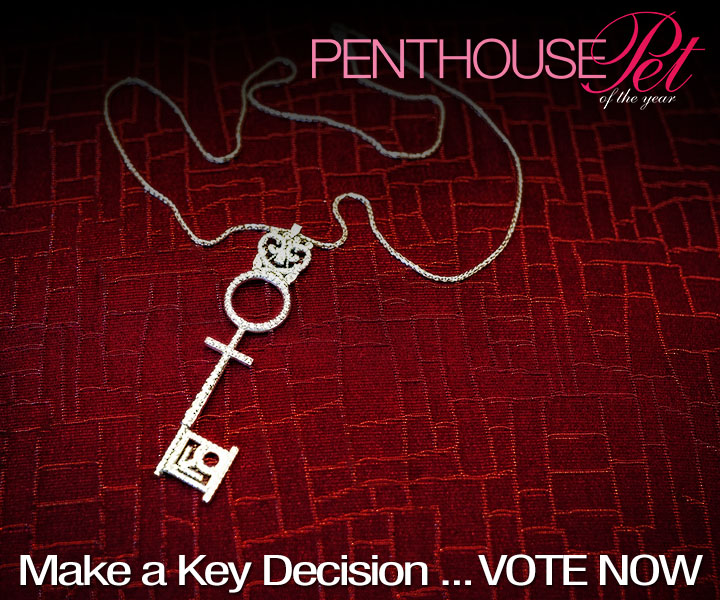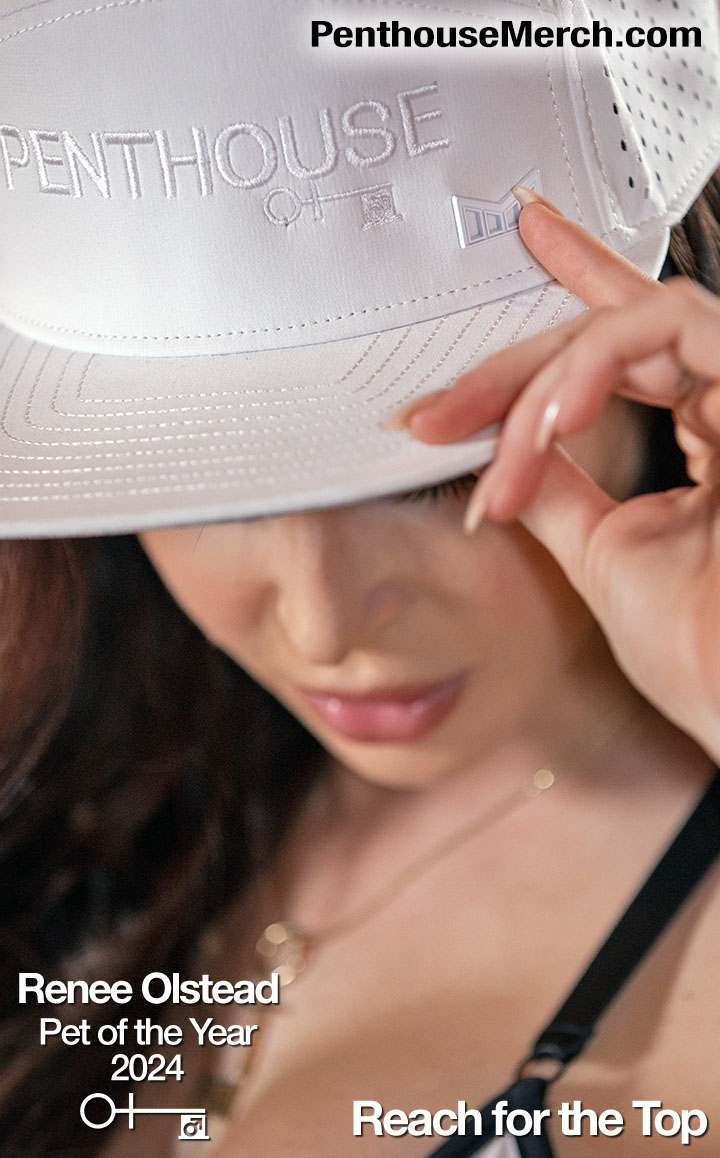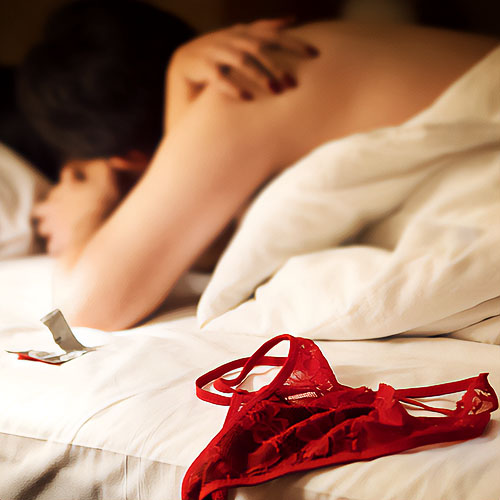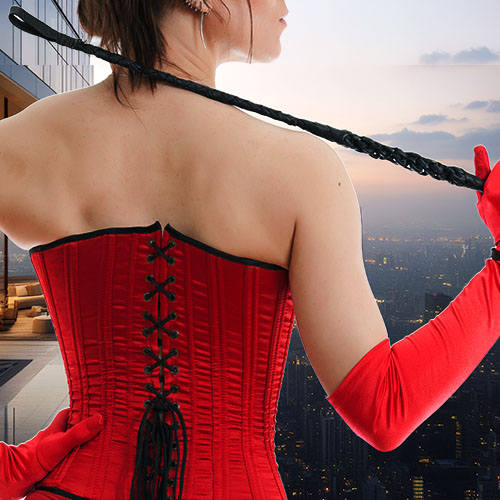To many Americans, the word feminism conjures up the image of angry women picketing strip clubs and the draconian, unconstitutional anti-porn ordinances penned by Catharine MacKinnon and Andrea Dworkin in the eighties.
Pornography & The Outlaw Feminists
Radical feminist censor Catherine MacKinnon once said, “Someone should explain to me how one can be a feminist and be pro-pornography…. They’re mutually exclusive.” But, as with most of her pronouncements, MacKinnon is wrong. These proud sex-loving, feminist pornographers are the proof.
The fight against porn became a favorite cause of the women’s movement soon after Roe v. Wade. Its disparate factions — mothers, single or professional women, lesbians, and college students — found in porn a handy symbol of male oppression and violence against women.
The fact that Bambi is more brutal than most sex films is lost on anti-porn feminists, who, like most women, have slim experience with the medium. Perhaps the greatest sin of traditional porn is its male exclusivity. Some anti-porn activists seize this as reason enough for banning it — leaving sex fantasy, even women’s sex fantasy, to languish as morally rebuked fodder for a small but growing outlaw-female society.
These are the feminists the media has given little coverage. Within the women’s movement, they were scoffed at for years. As high-profile feminists made common cause with reactionary, powerful Republicans and Moral Majority types, they solidified the public perception that feminism is synonymous with censorship. The mainstream media has been happy to comply with this opinion; it has steamrolled the diversity of opinion among feminists and elevated MacKinnon to star status.
Fortunately, however, there are a few places in America where feminism continues to spell freedom of sexual expression for women. Long a haven for social outlaws, San Francisco is home to a large community of “pro-sex feminists.” The city’s curvy topography immediately keys you into its wild female energy. For good reason, this most pretty of American cities attracts women who have a strong interest in “alternative” culture. Its past three decades have nurtured a thriving counterculture, an intense punk scene, and every imaginable tangent of New Ageism; by now, each has tempered the others and wrought a sexual culture as indigenous as the Golden Gate Bridge. As Lily Burana, the new editor of Future Sex, points out, “People go to New York or L.A. to make careers, but San Francisco is a lifestyle town. You move here to develop your life as you would like it to be, and that includes sexuality.” Mention MacKinnon and you’re likely to get an incredulous response: “Do people still pay attention to her? Isn’t she passe?” Like many things Californian, it’s an attitude that, in time, should catch on as new sexual expression is unleashed.
For the women who make up San Francisco’s unique sex-work community, this might mean starting a magazine, like Burana’s, that caters to “perversions,” or writing about performing in a peep booth, as Carol Queen did, or, like Lisa Palac, producing the first virtual-reality porn CD. For many it entails being both sex object and creator of pornography. Danielle Willis is a poet, play-wright, and performance artist whose work is inspired by her experiences as a stripper, dominatrix, and occasional porn actress. At 28 she has published two books of poetry and performed a sold-out, seven-month run of her play Breakfast in the Flesh District, a hilarious soliloquy spanning preteen masturbatory fantasies of Andy Gibb to later foibles in the sex industry. Costumed as a wispy Victorian heroine or a seventies vixen, Willis can be found several nights a week stripping to heavy metal and thrash music at the New Century Theatre in the Tenderloin district. Coiling around the brass rails on the runway, whipping her long mane with adrenalized exuberance, she puts one in mind of a mesmerizing post-punk maenad.
While women in other parts of the country have been embroiled in the great and endless pornography debate, feminists in San Francisco have been busy stripping, creating porn, and developing theories to justify it. If this seems paradoxical, they blame the mess on the sex-negative attitude fostered by the media, by intellectuals, and by anti-porn feminists. Coming from the expansive ethos of the West Coast’s “body intelligence,” it makes sense: A feminist stripper won’t second-guess the thrill she gets showing herself off to men; she won’t buy into the cliche that it makes her a patsy of patriarchy. However, she will tell you that her willingness to be objectified on stage or screen doesn’t mean that she invites it in the street or that she’s forfeited her right to respect.
Forsaking the “hardbody” mentality, the San Francisco body culture has a softer — yes, more “female” — edge. The difference shows itself most explicitly in the pornography produced by women who live in the Bay Area, which is not to say that the images are the least bit soft-core — a lot of these women are producing some of the raunchiest, taboo-breaking pornography around.
The brilliant psychiatrist Robert Stoller characterized male sexuality as oriented toward anatomy, with female sexuality aimed toward the psychic. It’s an essentialist distinction that raises hackles; narrowly interpreted, it suggests that women aren’t interested in sexy, naked bodies and that men care only about physical perfection. But it could also mean that the kind of porn women enjoy (and create) reflects anatomical perfection less emphatically than the soulful qualities of sexuality — what is expressed through a body, a look, or a mise-en-scene. They may debate aesthetics down to the last pierced nipple and dildo style, but one thing Willis and some other women — whom you will shortly meet — of San Francisco’s porn community insist upon is that no man who loves women, no feminist or lesbian, would ever scoff at the spectacle of female pleasure.
On a recent Sunday night at the New Century Theatre, however, spectacle is not in great demand. A few dancers hang out with Kiva and Shemena, the women working the — peep booth — an extremely low-ceilinged room (forcing those taller than four feet to kneel) where patrons view women having sex with themselves or one another. The atmosphere is giddy and intimate, like a sapphic slumber party. The floor is strewn with hot- pink dildos, G-strings, and tubes of lubricant. Flirtatiously entertaining one another as much as the customers, these women are part of a tradition; belly dancing was, after all, developed by women for their pleasure. For some, there’s a price to the job. Kiva, who also does contract estimations for an architecture-and-engineering firm, confides that she has lost friends since she started at the club. Shemena — a molecular-biology student — says she doesn’t get along in the straight world, and she credits her job with developing her tolerance for strangeness. The pony-tailed guy studying physics while guarding the peep booth, it turns out, is her boyfriend.
After work, Danielle Willis heads over to the Mitchell Brothers O’ Farrell Theatre, the crown jewel of San Francisco’s strip joints, where she worked until a come-on by the late owner, Artie Mitchell, became a violent altercation. She wanders this Vegas-style sex casino, finding her way to a large room with a raised platform-fitted with multiple shower heads-on which girls perform “water sports.”
She spots her friend Josie lying naked on a table, extending a leg for a middle-aged man slumped in the corner of a booth. Nearby, a pretty Asian girl explains that the girls fuck themselves with dildos or get off with one another. Of course, it’s verboten for customers to touch. Playing interviewer, Willis inquires, “So, what exactly do you do here?”
“It’s a diner situation,” says Josie drolly. “Instead of a hamburger, a guy is served a girl.” While we wait for Josie to finish, Willis talks with me.
“Catharine MacKinnon and Andrea Dworkin need to go and found their own little colony and live in it. I don’t think you can impose your will on an entire class of women who want to go out and take their clothes off in front of people. I don’t see pornography as intrinsically evil. You take any class on women in film, and they talk about the ‘male gaze.’ Well, if you don’t like the male gaze, make your own porno, like Taste of Latex and On Our Backs. If you want to make pornography about hugely fat women lying side by side, not dominating each other, and fingering each other’s foot while whale songs play in the background — I mean, if that’s sexy for you — go for it.”
“For me, this is a chosen profession. Even if there were economic equality, I don’t want to get up at nine in the morning, go to an office, have a sandy-blond page boy, and wear gray flannel skirts. I like the sex industry. There are things about it that I would change, but for the most part, if you’re a freaky young person, man or woman — or even if you start in your thirties — and you keep in shape, you can do it until you’re 60.”
“There is a conservative trend in the strip clubs. The male end is becoming moribund, like trying to go back to the old Playboy Club ethic, but fortunately, the female side seems more explorative. The tide has turned toward younger women wanting to do the alternative thing. Future Sex is kind of like Penthouse on ecstasy.”
“Pornography is fiction; rape is fact. If you hold me down and fuck me against my will, that’s rape. If you film it, that’s a film of a rape. If I decide, ‘Hey, I’ve always had this fantasy of acting out the Miss Cavendish scene from Opus Pistorum, where Henry Miller and his buddies gangbang this girl,’ that’s not rape, that’s my fantasy. That’s the problem with the Dworkin and MacKinnon people. They assume men have so much power that they can force women to get silicone tits and make movies. Women are doing it themselves because they want to, because they can make money.”
Watching Debi Sundahl’s pussy spurt like a geyser during a G-spot ejaculation in the video Clips settles the question about the authenticity of the big O in porn — Sundahl’s feat is no less breath-taking a work of nature than Old Faithful. Her publication On Our Backs is the most successful magazine of lesbian erotica. She is clearly a woman given to strong sexual statements in all media.
We meet in the Castro district at the office of Blush Entertainment, the parent company of On Our Backs and of her video company, Fatale. The place has all the cheerful chaos of a thriving alternative business — in her office there’s a photograph of a bikini-clad Sundahl sporting a strap-on dildo. Such subversive images are her magazine’s stock in trade. Sundahl suddenly appears in black crushed-velvet leggings, cowboy boots, and a motorcycle jacket. With sun-bleached hair and a deep tan, she’s a Midwestern transplant making up for lost time.
On the sunny terrace of a health-food restaurant, she picks at tabbouleh salad and smokes. She mentions ruefully that she’s flying back to Minneapolis in a couple of days to visit her family and ex-husband. The man she married when she was 18 has been diagnosed with cancer. Twisting her wedding ring (from her current marriage), she frets about how their son is coping. If the ring, the chipped nail polish, and the motherly concern don’t quite tally with the popular conception of lesbianism, that’s precisely the point. In the decade between her marriages, Sundahl and Nan Kinney, her partner and former lover, bucked lesbian stereotypes and defined a new eroticism-commitments to which they remain faithful today.
“Women have a strong and proud sexual history with the means of production of pornography,” she tells me. “Let’s not forget: According to Webster’s, pornography means ‘the writings of harlots.’ Women’s sexual knowledge lies with the women who work in the industry, who are shamefully — almost criminally — stereotyped. They are the professionals, the experts. They’re the hands-on caretakers, healers, creators, entrepreneurs, spiritual guides, and protectors of women’s sexual knowledge.”
“While I was a student in Minneapolis, I fell in love with a woman and came out as a lesbian. I had feelings I did not know my body was capable of having. Being a lesbian was a sexual awakening; it kicked open the door for sexual exploration. But when my lover and I sought out images of our sexuality, we found nothing. The whole atmosphere in Minneapolis was repressive, so we moved out here to the gay mecca to join Samois, an S&M lesbian collective which was the only group of lesbians talking about sex at that time.”
“I very much wanted to see what stripping was all about, and I found a wonderful camaraderie with the women in the club. As a stripper, you work in a milieu where there are strict rules about touching, about what’s a fantasy and what’s reality — you know, the line between a show and inappropriate harassment. The men get short shrift; they are often portrayed as jaded or gross. But I found men who are wonderful. They are no different in a sex club than they are anywhere else. They’re partying. Many were sophisticated consumers of sexual entertainment. They were impatient when a performer was just showing off her bad attitude about her job and about sex. I’m vehement about quality in sexual entertainment. The quality is appalling, and it has everything to do with people’s bad attitude about sex.”
“As a stripper, I learned that it’s okay to be objectified: ‘That’s my job-objectify me.’ Women aren’t learned in the skill of how to objectify something for its erotic potential. At first it was easier to do this with a woman. I could eroticize the masculine qualities in a woman because they’re no longer ordinary, something you see on the street. So with my [second] husband, I learned what it was really like to kiss a woman.”
“For years I had this safe space in a women’s community to explore my sexuality. Then I wanted to bring what I had learned back to men. Part of that was the ego thing. Like, ‘I’m a man’s wet dream — a lesbian who hasn’t had sex with a man in eight years, a stripper — and I’m going to blow your socks off. I know what you want, and I have no problem with it. I’ll bend over, take i3. quickie, do romantic, I’ll put lip-stick on you and comb your hair, any of it.’ It was a wonderful power to be that comfortable in the sexual realm. I was re-entering interaction with guys as a changed person.”
“I had affairs. We all know lesbians fuck men — that finally came out a few years ago, like the last lesbian taboo. ‘Yes, you can still interact with men,’ which is the change that On Our Backs helped foster. The magazine began as a radical affront to lesbian separatism. That’s why we satirized the name Off Our Backs. So we are completely open to sexuality. We happen to be lesbians, but our goal is women’s sexuality. At least lesbians have one sex magazine to call their own-straight girls don’t have anything. But I’ve never wanted to turn the magazine into a straight magazine, because I have a business structured around a market which I had to create. Besides, lesbians are truly at the vanguard of exploring women’s sexuality.”
Kat Sunlove (a.k.a. Mistress Kat) has led, and continues to lead, many lives. On the rainy morning we meet for breakfast, she is smartly dressed in jeans and boots, suggestively explaining that she’s going horseback riding this afternoon. Before this gregarious Texan became what she laughingly calls the “infamous dominatrix,” appearing on shows like “People Are Talking” as a booster for softening the taboo image of S&M, she worked as a political activist and for a national social-service organization called Big Brothers/Big Sisters.
“When I burst on the scene as Mistress Kat in the late seventies,” she says, “I don’t think any professional dominatrixes had gone public. In 1980 my life partner, Layne Winklebleck, and I started workshops to teach the joys of mutually erotic, consensual, and safe S&M. A lot of people play with power in their relationships on an unconscious level. Then it looks ugly — it’s domestic violence. S&M is about consciously dealing with the power balance in a relationship. Many women are getting involved in this kind of erotic play because of the interest of the man. Our workshops were focused on female dominance, male submission, but we don’t have a bias. It’s just … the world needs that.”
By late 1980 Sunlove — who says she’s been called “the Dear Abby of S&M” — was writing a column on erotic dominance and submission for Spectator, a Bay Area weekly. When its employees bought the paper in 1987, Sunlove became president of the corporation and later the publisher. In this position, and as a founder of the anti-censorship organization Cal-Act, she tirelessly wages legal battles against censorship and has become an eloquent spokesperson for the First Amendment.”
“For seven years Spectator has been fighting censorship in Sacramento. In the past, bills were introduced by Republicans and defeated in a Democratic-controlled legislature. In 1993 California adopted term limits, so politicians are looking to move up to the next level if they want to stay in business. Steve Peace, a Democrat, was running for the state senate in San Diego, a Republican district, so he needed a conservative flag to get elected. He introduced a bill which requires guards at vending machines containing so-called harmful matter. Talk about putting us out of business in a hurry! ‘Harmful matter’ is a legal definition that is basically the Miller test for obscenity applied to minors. ‘Taken as a whole, appealing to prurient interest … describing in a patently offensive way sexual conduct, and … lacking serious literary, scientific, political, or artistic value.’ It’s interesting that, in our laws, sex is the only topic that gets the pejorative description ‘harmful’ — not drugs, guns, or any number of things that are harmful. We feed a concept out here that sex is harmful.”
“This bill is content-based, and that’s a dangerous precedent. It violates the intent of the First Amendment, which says you can get up on the street corner and say your point of view. The sidewalks become an important venue for the unpopular point of view. We try to keep our covers tasteful — no nudity, nothing showing — and we respond to local regulations, if they want blinders which leave only our name visible. But once the court and lawmakers step inside our pages and say, ‘We don’t like this,’ they are making law on the basis of personal opinion. They’re making the First Amendment into a popularity contest.”
“Well, the bill was delayed, but it’s a two-year bill that came back at the beginning of the legislative session this year. Meanwhile, Peace got elected. We figured he wouldn’t need it as much, but he was just as determined to pass it.”
“The state claims it has an interest in protecting minors from viewing inappropriate material. On the. other hand, there is a valuable adult right at stake. The law says that bills that are going to impact constitutional rights and protect state interest must be drawn as narrowly as possible to maintain freedom for adults and still satisfy state interest.”
“Spectator and some other adult publishers — New Reality, L.A. Xpress, Advanced Publications, and Pleasure Guide — hired Stanley Fleischman, a noted First Amendment lawyer, to file an injunction to keep the law from going into effect. Since there’s a question about its constitutionality, they should grant the injunction. Then we’ll fight it in court.”
“It’s hard to know what’s harmful. Is it a straight pussy shot? Is it not a straight pussy shot, accompanied by the text, ‘Fuck me, baby’? What is it? I have to risk jail as a publisher in order to find out. If I just let the law go into effect and trust that I’m not harmful, then they come put me in handcuffs and say, ‘We think you are, so go to court and prove you’re not.’”
As a film student in Minneapolis in the early eighties, when MacKinnon and Dworkin were the ideological plat du jour, Lisa Palac questioned the anti-porn bias of the feminism she was learning. When she finally watched some tapes, she couldn’t figure out what the fuss was about. “I could do better,” she decided, and founded a sex newsletter. Such refreshing decisiveness is evident in everything she does. Arriving at our meeting in a low-cut, stretch-velvet crimson dress and red lipstick, fresh from a guest lecture at San Francisco State University, she announces she will be having a frozen margarita with lunch. Not for a moment does she waffle.
Palac moved to San Francisco in 1989 and met Susie Bright, who offered her a staff position at On Our Backs. Two years later she became the editor of Future Sex. Her curiosity about sex and technology led her to collaborate with record producer Ron Gompertz on Cyborgasm, the first virtual-reality erotic recording — a compilation of stories and actual sex scenes in 3-D sound. Time Warner Audio Books picked up the “Cyborgasm” series for distribution. Cyborgasm II, intended to involve contemporary rock artists, is under way. Palac’s articles have been published in Penthouse, Playboy, and the London Observer, and her ribald fiction has appeared in The Best American Erotica 1993.
“Early sex magazines were started by people of a generation when the idea of being a sex radical meant something else,” she tells me. “Future Sex addresses the generation that’s grown up surrounded by sexually explicit material, with a different set of sex rules. The first issue of Future Sex was a hodgepodge because other people had worked on it, and that became apparent in the reviews that it got. I told the publishers, ‘If you want to do something different, it has to be more than naked women. The audience has to be men and women, the models have to be male and female, and the concept of sex and technology has to be framed with culture. It can’t just be a sex-gadget magazine, otherwise there’s not much to write about, especially since the virtual-reality sex technology doesn’t exist yet.’”
“We had a pictorial of a threesome — one woman and two men. Certainly, Penthouse has covered that scenario, but the guys never touch each other. And that goes for straight videos as well. A girl-girl scene, we’re all supposed to get into that. But I get incredibly turned on by seeing men touch, and it has nothing to do with them seeming gay. I also wanted to challenge this unwritten rule that says, ‘No men will buy a magazine if there’s men touching each other’s cocks.’ I disagree that straight guys are so repulsed by homosexuality, or the illusion of it, that they’ll flee in terror. A younger generation of men are more in touch with their masculinity, so they can be a little girl once in a while, to have an adventure.”
“I look at the triple-X, 3-D CD as an anthology of things that people like and sounds that shape our sexuality. My definition of what’s erotic has expanded beyond what gives me an orgasm; it’s what makes me question who I am and what I want in my sexual life. So I rounded up people who would feel comfortable with recording equipment in the room while they’re having sex or telling an erotic story — people with an exhibitionistic streak. I said, ‘No pictures, just your voice.’ That gave people a lot of freedom. I wanted to capture the dynamics of the sounds when you’re having sex, whether it’s the actual sounds of kissing or a bed creaking, as well as fantasies.
“And it was more difficult to find men to do it. Men are guarded about their erotic fantasies, which I find surprising, since most sex entertainment is geared for men. I’m always trying to find a guy who can be comfortable and give us the lowdown on what’s going on in his mind when he’s about to have an orgasm. That’s what I’m curious about.”
Sporting a pixieish haircut and large glasses, Carol Queen looks more like a brainy graduate student than a woman who has worked as a prostitute and peep-show performer — that is, until she smiles a richly knowing smile. A prolific writer, Queen has shared unique insights about sexuality (based on extensive empirical research) in articles and stories that have appeared in The Best American Erotica 1993, Herotica II, The Erotic Impulse, and Madonnarama, as well such magazines as On Our Backs, Taste of Latex, and The Advocate (her article “Sacred Prostitutes” appeared in the November 1994 Penthouse, her book Exhibitionism for the Shy is due in February).
We meet at an erotic book store. Queen is in her element among volumes like The Clitoral Kiss, Hot Monogamy, and Macho Sluts. She tells me that she was enrolled in a graduate program at the Institute for Advanced Study of Human Sexuality. When she ran out of money, she got a job with San Francisco Sex Information, the most established sex hot line in the country, and began working as a prostitute.
“I always got my clients through referral and felt safe about that. I was working out of curiosity, and I respected what they were there for. I respected what both of us were there for,” she says.
Even better was the year she spent dancing nude at the Lusty Lady — the peep booth gave her an opportunity to get even more explicit and intimate with customers. In addition to writing a book about exhibitionism and a novel about her adventures in the skin trade, this sexual overachiever speaks at conferences and on campuses. She can also be found conducting a host of workshops, from “Sex Party Etiquette” to “Fun With Sex Toys” and “S&M 101.”
“I lived out a lot of fantasies as a prostitute, but that wasn’t going to continue,” she says. “Except for maintaining a few long-term clients, I quit prostitution because I wanted to make sure that more of me and my sexuality could stay present. There’s a sense of sleepwalking you get into. I tasted that alienation and didn’t want to fall in. The peep-show situation was more intense than prostitution, because there were so many more guys jammed into a short period of time. It was a swinging door; one would leave and another come in. Eventually, I would close the place down for five minutes, so the support staff could come in and wipe up the pile of come on the floor.”
“I adored the guys who were particularly kinky and divergent in their interests, and a lot of them adored me and saw me all the time. But management started to shorten my shifts because I was the oldest woman. I thought that was extremely fucked up, especially because this was my playground and I was having fun having tantric orgasms with strangers through a pane of glass. I always considered it a fabulous perk. After four hours of masturbating and coming, I would walk out in a profoundly endorphined — out state. I was in a place of sexual power and pleasure in the booth. Outside of that, I was a worker and didn’t have a lot of rights, so I quit, and I miss it. If I could find a context where I could do that and not have anybody act like a manager, I’d do it in a hot second.”
“The left in this country minimalizes the impact of sexuality in our lives. It’s like, it doesn’t fit neatly into an existing theory, so, ‘Let’s call it a bourgeois obsession and move on.’ Intellectual leftists fall into that class trap about pornography — they think once it gets elevated to art, it’s fine: ‘We have to support that, it’s what the First Amendment is about.’ I’ve heard so many artists make a speech just like that. If they could only grasp that the successes of the government inspired by the Meese Commission were what emboldened those people to cut [National Endowment for the Arts] grants from people who were doing explicit work! The Meese Commission absolutely laid the groundwork for everything that happened in the N.E.A. When you look at Mapplethorpe’s most ‘objectionable’ stuff, you see his inspiration in the gay porn of the sixties and seventies. It’s not like he had his head in a vacuum when he decided to pose a couple in leather with exposed dicks. And yet, because he managed to elevate that stuff to museum-level quality, the cultural context in which he worked just got swept away.”
“I don’t think sexual fantasy is given a whole lot of respect all by itself, probably because it goes with masturbation. I wonder what would happen if the people who are uncomfortable with porn put their hands in their pants and watched porn the way it was intended to be watched. You lose some of the impact and logic of porn if you don’t mingle it with arousal. One of the things that porn has done for me is giving me role models for the enjoyment of rollicking fucks and kittenish seduction and a voracious female sexual appetite. And I’m clear that that’s not all female sexuality is.”
“I had an intense interest in sex as a teenager, but when I turned to pornography to find some reflection of myself, to find some cute punk guys, they were nowhere to be found.” Lily Burana, the editor of Future Sex, speaks from behind a very large desk, punkly chic in high platform shoes, a plaid mini, and braided platinum-blond hair.
Burana moved to San Francisco in 1989, got a job as a stripper, and at 19 created a sex magazine that spoke to her punk-influenced erotic tastes. “There were magazines that covered alternative music, but nothing that covered alternative sex,” she explains. “I danced and made the money for it. It was a scrappy little magazine, and then it really took off. Pretty soon I was publishing it glossy; it had a color cover, color center. I had positioned myself on the crest of a wave with the pan sexual, queer, S&M thing that was starting to unfold.”
Last spring Burana accepted the editorship of the more mainstream Future Sex. She says the credo she takes to the office every day is John Waters’s: “Work your most pernicious ideas into the mainstream.”
“One thing I learned as an erotic dancer is that not only did I not have to be afraid of male sexuality,” she says, “I didn’t need to be afraid of my own. A lot of women experience wildness vicariously through men and feel we can’t stir up our own body’s sexual reality. I come from an over-educated WASP family — politically liberal, but sexually, The world is flat, and if you go too far, you’re going to fall off the end of the earth and there will be monsters. Period. End of story. So it was remarkable to find out that as a good girl, I could be in an extreme situation and actually feel liberated. I got to make a decent living and find out that being a feminist and a sex worker weren’t mutually exclusive.”
“I miss being a stripper. Male attention can be really nice, having a relatively safe space to express yourself sexually. You get to wear great clothes, do all these sexy movements, and communicate in an erotic way that doesn’t have to do with a relationship. It’s not about a house and a family, it’s about mutual appreciation. Society doesn’t afford this kind of expression to women in any other way.”
“If you create a sexually-oriented media just for the dollar, a lot of the integrity is going to be compromised. Plenty of people open a porn magazine and feel like a complete alien, because you see a person who looks nothing like you; you’re never going to groom yourself that way; you don’t strike those poses. Taste of Latex was a subterranean project, and it served the community I live in. But now I’m ready to take that to a bigger stage with Future Sex and incorporate some of that more wild, under-acknowledged, and misunderstood sexuality.”
“Technology puts the power to create pornography back into the hands of people. That’s why sex magazines and amateur video are increasingly popular. It gives people the opportunity to create sexual media that shows their vision. Some of it is going to be predictable, but a lot is innovative and exciting. The video explosion didn’t happen until X-rated films started getting on video. The same thing is happening with CD-ROMs. Porn may actually save a l9t of technology, and I don’t think people are willing to admit that. If people didn’t enjoy sexually oriented material, these e-mail bulletin boards wouldn’t be proliferating. To imply that it’s a minority is contradicted by the popularity of the stuff, because it can’t be the same five percent of the population. Everybody is doing it.”
Laura Miller is the director of advertising and publicity of San Francisco’s Good Vibrations, which she blithely describes as “a sex-toy, book, and video emporium that was created to be a clean, well-lit place to shop.” The store was intended as a place for women, but not exclusively. Men sometimes come in to buy something for an embarrassed girl friend. The cooperative store (its workers are owners) offers a supermarket’s stock of vibrators and dildos, cock rings, and other sexual paraphernalia, as well as a collection of books and videos catering to female pleasure. Across the country, women take comfort in their beautiful and smartly written mail-order catalogs-sex-ed primers for the nineties.
“Any reasonably liberal publication usually takes our ads,” says Miller, a quietly dazzling woman with an aureole of thick, dark hair and intense blue eyes. “But some feminist publications won’t. We could never get Ms. to accept even a classified from us.” Such ironies are never lost on Miller, who has written with eminent sense and sensibility about film and sexual issues for the San Francisco Examiner.
“I’m critical of the idea that sexual content has to be redeemed; that it’s wrong to go to a piece of art with the objective of being turned on,” she tells me. “The director Philip Kaufman objected to the NC-17 rating Henry & June received. He didn’t argue that there isn’t enough sex in it to make it porn, but that the difference between his movie and Behind the Green Door is that Henry & June depicts sex in a more woman-centered or sensitive way. It’s supposed to be a more accurate portrayal of sexuality. But it doesn’t go where most women want to go sexually. There isn’t a single cunnilingus scene in the movie, and that’s what women prefer. There’s more cunnilingus in the average porn movie than the average sexy art movie. When I asked friends what R-rated or Hollywood movies they think are sexy, nobody ever says Henry & June — they say The Big Easy. Why? Because there’s a really sexy cunnilingus scene in it.”
“A lot of the negative reaction to pornography comes from understandable sources. But because people are so conditioned to be dishonest about their sexuality and sex in general, the responses get distorted. People focus on violence in porn, when really, there’s not that much. Certainly not in comparison to Bonnie and Clyde or The Terminator. And yet, to a lot of people, especially women who aren’t accustomed to those images, it feels like an assault. First of all, in porn, a major taboo — looking at genitals — is being violated. Second, their sense of a ‘good woman’ is attacked by the fact that they are looking at it. It upsets them, and they experience this as assault. They say, ‘This is violent’ because they feel violated. Nobody can say, ‘Look, I was raised repressively and taught to feel that sex was bad, and that’s why this upsets me so much. I have to give myself time to get accustomed to it.’ They automatically think, ‘This makes me feel bad, this must be bad.’ Sometimes, if a woman doesn’t see porn as an assault. she sees it as a lesson about who she should be or what her sex life should be. Women are trained to think image is the only important thing about us, so every time we look at an image of a woman, we see an example we’re supposed to live up to. It’s a real accomplishment for women to learn how to approach pornography the way men do.”
Strippers who actually enjoy stripping? Go figure. … Worth noting, Carol Queen’s article “Sacred Prostitute” first appeared in the November, 1994, issue of Penthouse Magazine and reran in these pages. You can still find her book “Exhibitionism for the Shy” on Amazon.

























